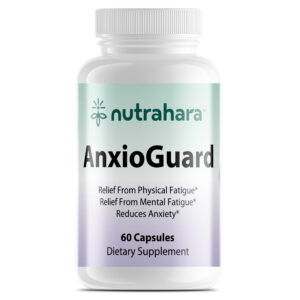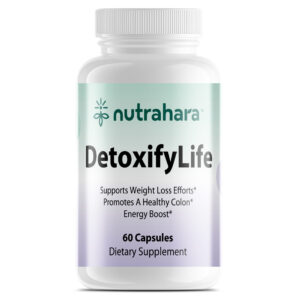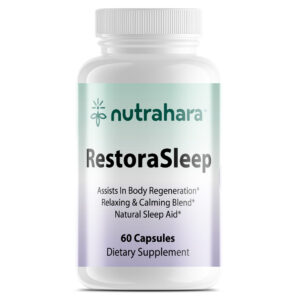
1. Introduction to Adaptogenic Herbs
In today’s fast-paced world, chronic stress has become an unavoidable reality for many—especially for women balancing careers, family responsibilities, hormonal changes, and emotional wellbeing. Adaptogenic herbs offer a time-tested, plant-based solution to help the body adapt to physical, emotional, and environmental stressors. These herbs work by enhancing the body’s ability to restore balance, also known as homeostasis, especially in the adrenal and endocrine systems.
The term “adaptogen” was first coined in the 1940s by Russian scientist Dr. Nikolai Lazarev, who defined it as a substance that increases the body’s resistance to stress while producing a normalizing effect. What sets adaptogenic herbs apart is their unique dual action: they can calm the body when it’s over-stimulated and energize it when it’s fatigued—without causing dependency or disrupting normal biological functions.
Popular in traditional healing systems such as Ayurveda and Traditional Chinese Medicine, adaptogenic herbs like ashwagandha, holy basil, rhodiola, and reishi have now been scientifically studied and embraced by modern wellness communities. Their ability to support immunity, energy, mental clarity, and hormonal balance has made them essential allies in natural health practices.
In the following sections, you’ll discover how adaptogenic herbs work, their specific benefits for women, and how to safely incorporate them into your daily wellness routine.
2. How Adaptogenic Herbs Work in the Body
Adaptogenic herbs work by modulating the body’s response to stress and helping maintain internal balance through their impact on the hypothalamic-pituitary-adrenal (HPA) axis, neuroendocrine system, and immune function. When you encounter stress—whether physical (illness, fatigue), emotional (anxiety, grief), or environmental (toxins, poor sleep)—your adrenal glands release cortisol, the primary stress hormone. While cortisol is essential in short bursts, chronic elevation can lead to anxiety, fatigue, hormone imbalance, weakened immunity, and even weight gain.
Adaptogenic herbs help “train” your body to respond more efficiently to stress by regulating cortisol levels and enhancing cellular energy production. They act like a thermostat: if your body is running too high (overstimulated), they calm it; if too low (exhausted), they stimulate it—without overshooting either direction.
For example:
- Ashwagandha reduces elevated cortisol and promotes restful sleep.
- Rhodiola boosts mental clarity and energy by reducing stress-induced fatigue.
- Holy Basil (Tulsi) lowers blood sugar and cortisol while uplifting mood.
Adaptogens also support neurotransmitter balance, especially dopamine and serotonin, enhancing emotional resilience and cognitive performance.
Unlike pharmaceuticals that often target one pathway, adaptogenic herbs work broadly and synergistically to restore systemic balance. Their gentle yet effective action makes them ideal for long-term use in holistic wellness plans.
3. Top 10 Adaptogenic Herbs and Their Benefits
Adaptogenic herbs are unique botanicals that support the body’s ability to adapt to stress and maintain equilibrium. Each herb offers distinct benefits—some nourish energy and focus, while others soothe and restore. Below are ten powerful adaptogenic herbs, including practical uses and benefits:
3.1 Adaptogenic Herbs: Ashwagandha (Withania somnifera)
Ashwagandha is a cornerstone of Ayurvedic medicine, celebrated for its stress-buffering and energy-restoring qualities. It helps normalize cortisol levels, which can drop due to chronic stress, and enhances sleep and emotional calmness. A 2023 review highlights its efficacy in reducing anxiety, improving sleep, boosting athletic performance, and supporting cognitive function (healthline.com).
Notably, Nutrahara’s Ashwagandha with Black Pepper combines pure ashwagandha root powder with black pepper extract to significantly enhance absorption, ensuring more bioavailable withanolides per dose. This formulation supports mental clarity, stress resilience, balanced mood, and energy – all in a convenient capsule.
3.2 Adaptogenic Herbs: Rhodiola Rosea
Rhodiola is esteemed for its ability to combat fatigue and elevate mental stamina. It increases endurance and enhances cognitive performance during periods of stress, making it a go-to for high-pressure situations or fatigue.
3.3 Adaptogenic Herbs: Holy Basil (Tulsi)
Tulsi is renowned for its calming effects, balancing blood sugar, and supporting immunity. It alleviates both physical and emotional stress, often consumed as a soothing tea or extract.
3.4 Adaptogenic Herbs: Maca Root
Maca is prized for hormonal support and libido enhancement, particularly for women under hormone stress. It can stabilize energy levels and uplift mood, and is typically added to breakfast smoothies.
3.5 Adaptogenic Herbs: Schisandra Berry
Schisandra is a trifecta herb: it supports liver function, enhances stamina, and promotes radiant skin. It’s traditionally used in blends to enhance longevity and vitality.
3.6 Adaptogenic Herbs: Ginseng (Panax ginseng)
Panax ginseng provides a gentle boost in energy, sharpens cognitive function, and supports immune health. It’s often included in formulas designed for general wellness support.
3.7 Adaptogenic Herbs: Eleuthero (Siberian Ginseng)
Eleuthero is excellent for gut-brain balance and adrenal health—it helps alleviate chronic stress and improve mental clarity for long-term resilience.
3.8 Adaptogenic Herbs: Licorice Root
Licorice supports adrenal function and digestive health. It helps stabilize blood sugar and mitigate weariness, though it should be used with caution in those managing hypertension.
3.9 Adaptogenic Herbs: Cordyceps Mushroom
Cordyceps is revered by athletes for its ability to enhance oxygen uptake and endurance, and it’s also beneficial for respiratory health and post-illness recuperation.
3.10 Adaptogenic Herbs: Reishi Mushroom
Reishi is known as a “calm adaptogen”—it soothes the nervous system, improves sleep quality, and boosts immune function, ideal for evening use.
4. Benefits of Adaptogenic Herbs for Women
Adaptogenic herbs provide unique and transformative support for women navigating the complexities of hormonal changes, stress, reproductive health, and energy management. Unlike synthetic treatments that often target one issue, adaptogenic herbs offer multi-system benefits, making them especially valuable for women across all life stages.
For menstruating women, herbs like ashwagandha, holy basil, and maca help balance estrogen and progesterone, ease PMS symptoms, and support emotional wellbeing. Rhodiola and eleuthero are excellent choices for boosting energy and focus during demanding menstrual phases.
In the reproductive years, maca root is known to support libido, fertility, and stamina, while schisandra enhances detoxification, liver function, and skin radiance. Adaptogenic herbs can help regulate irregular cycles and reduce the impact of hormonal stress, especially in women with PCOS or adrenal fatigue.
During perimenopause and menopause, many women experience mood swings, hot flashes, anxiety, and disrupted sleep. Herbs like ashwagandha, reishi mushroom, and licorice root help ease these symptoms by stabilizing the HPA axis and improving resilience to stress. Nutrahara’s Ashwagandha with Black Pepper is particularly effective here, thanks to its enhanced bioavailability, making it ideal for calming anxiety, improving sleep, and restoring hormonal balance.
Overall, adaptogenic herbs empower women to regain control over their physical, emotional, and hormonal health in a natural, non-invasive way.
5. 7 Practical Tips for Using Adaptogenic Herbs
Integrating adaptogenic herbs into your lifestyle can be both simple and highly rewarding. However, to maximize their benefits and ensure safety, it’s important to use them with intention and awareness. Here are seven essential tips to help you make the most of these powerful natural allies:
Tip 1: Start Low and Go Slow
Begin with a single adaptogenic herb at a low dose to observe how your body responds. Everyone reacts differently, so starting slow helps prevent any unwanted side effects.
Tip 2: Be Consistent
Adaptogenic herbs work best when taken consistently over time. Most benefits are noticeable after 2 to 6 weeks of regular use. Set a reminder or incorporate them into your morning or evening routine for consistency.
Tip 3: Match Herbs to Your Needs
For stress and sleep, try calming adaptogens like ashwagandha, reishi, or holy basil. For fatigue and mental fog, choose energizing options like rhodiola, cordyceps, or eleuthero. Nutrahara’s Ashwagandha with Black Pepper is a great foundational herb for stress resilience.
Tip 4: Use the Right Form
Adaptogens come in many forms—capsules, tinctures, teas, and powders. Choose what fits your lifestyle. Powders are great for smoothies, while teas work well for relaxation rituals.
Tip 5: Cycle Every 6–8 Weeks
To maintain effectiveness, take a 1–2 week break after every 6–8 weeks of continuous use. This gives your body a chance to reset and avoid dependency.
Tip 6: Pair with Healthy Habits
Adaptogens amplify the benefits of healthy routines like balanced eating, regular exercise, yoga, and quality sleep. They’re not a cure-all, but a powerful complement to a wellness lifestyle.
Tip 7: Consult a Professional
If you’re pregnant, breastfeeding, on medication, or managing chronic conditions, speak to a healthcare provider before adding adaptogens to your routine. Some herbs may interact with medications or hormones.
6. How to Choose the Right Adaptogenic Herbs for You
Choosing the right adaptogenic herbs begins with understanding your individual wellness goals, lifestyle, and body type. While all adaptogens help the body resist stress, each herb has its own unique strengths, making some more suitable than others depending on your needs.
Start by identifying your primary concern:
- Chronic fatigue or burnout? Opt for energizing adaptogens like Rhodiola, Eleuthero, or Cordyceps, which support stamina, mental clarity, and adrenal recovery.
- Emotional stress or anxiety? Calming herbs such as Ashwagandha, Reishi, and Holy Basil work to lower cortisol, stabilize mood, and improve sleep.
- Hormonal imbalances or PMS? Consider hormone-supportive adaptogens like Maca, Schisandra, and Licorice Root that help regulate estrogen, progesterone, and cortisol levels.
- Low libido or fertility concerns? Herbs like Maca, Ginseng, and Ashwagandha enhance reproductive vitality, sexual function, and hormonal synergy.
For a beginner-friendly and effective option, Nutrahara’s Ashwagandha with Black Pepper is an excellent place to start. The black pepper extract enhances absorption, making the calming and restorative effects of ashwagandha more bioavailable and reliable.
Also consider delivery form—capsules are convenient, powders are versatile in smoothies or meals, and tinctures offer fast absorption. Ensure you’re choosing high-quality, organic, and third-party tested products for purity and potency.
Ultimately, the right adaptogenic herb is one that aligns with both your body’s signals and your long-term health goals. Listen to your body, track your progress, and adjust as needed.
7. Real-Life Testimonials: Women Who Trust Adaptogenic Herbs
The true impact of adaptogenic herbs is best understood through the voices of women who have experienced their benefits firsthand. From stress relief and better sleep to hormonal balance and renewed energy, adaptogenic herbs have helped countless women reclaim control over their health.
Clara, 38 – Fitness Instructor, Seattle, WA
“I was constantly in overdrive—teaching classes, managing clients, and juggling home life. After a friend recommended Nutrahara’s Ashwagandha with Black Pepper, I decided to try it. Within two weeks, my anxiety levels dropped, and I started sleeping through the night again. I feel more grounded and emotionally stable.”
Nadine, 44 – Entrepreneur, Austin, TX
“Perimenopause was tough—hot flashes, mood swings, and zero libido. I combined maca root and rhodiola with morning smoothies. The changes have been life-changing. I’m no longer dreading the day or snapping at my team.”
Priya, 32 – New Mom, San Jose, CA
“Postpartum fatigue hit me hard. My doula suggested reishi and holy basil. They helped stabilize my mood and gave me the mental clarity I needed during those sleepless months.”
Aimee, 29 – Marketing Executive, Chicago, IL
“I travel a lot for work, and the jet lag and pressure were draining me. Cordyceps and eleuthero helped boost my energy and immune system. I now take them before every trip and rarely get sick.”
Teresa, 52 – Holistic Therapist, Asheville, NC
“I’ve been using adaptogens in my practice and for myself for over a decade. Nutrahara’s Ashwagandha is one of the best I’ve come across—it’s clean, effective, and easy to incorporate into daily life. It’s my go-to for stress and adrenal support.”
8. Conclusion: Your Journey with Adaptogenic Herbs
In an age where stress, hormonal imbalances, and chronic fatigue have become the norm, adaptogenic herbs offer a time-tested, natural solution that supports the body’s innate ability to heal and thrive. These remarkable herbs work not by forcing change, but by gently guiding the body back to balance—physically, emotionally, and hormonally.
From the ancient roots of Ayurveda and Traditional Chinese Medicine to modern wellness practices, adaptogenic herbs like ashwagandha, maca, rhodiola, and reishi have empowered women to take charge of their health. Whether you’re navigating the chaos of early motherhood, struggling with perimenopause, or simply seeking mental clarity and better sleep, there’s an adaptogen that can support your unique journey.
The key to success lies in understanding your body’s needs, selecting high-quality herbal products, and using them consistently and mindfully. Nutrahara’s Ashwagandha with Black Pepper is an excellent starting point—formulated to enhance absorption and effectiveness, it serves as a foundation for stress relief, improved sleep, and emotional stability.
Adaptogenic herbs are not a one-size-fits-all miracle. Rather, they are intelligent tools that work best as part of a holistic lifestyle—alongside proper nutrition, regular movement, rest, and self-care.
By embracing the power of adaptogens, you’re not just addressing symptoms – you’re cultivating resilience, vitality, and a deeper connection with your body. Your wellness journey is personal, but you don’t have to walk it alone. Let nature’s adaptogens be your daily allies in creating a balanced, vibrant life.
Written by the Nutrahara Team
This article was developed by the Nutrahara team of nutrition scientists and naturopaths, who specialize in formulating safe, effective, and science-backed supplements for women’s health. Every ingredient we use is carefully selected to support your body’s unique needs—naturally. Follow us on LinkedIn for expert insights and updates on our latest wellness solutions.



















